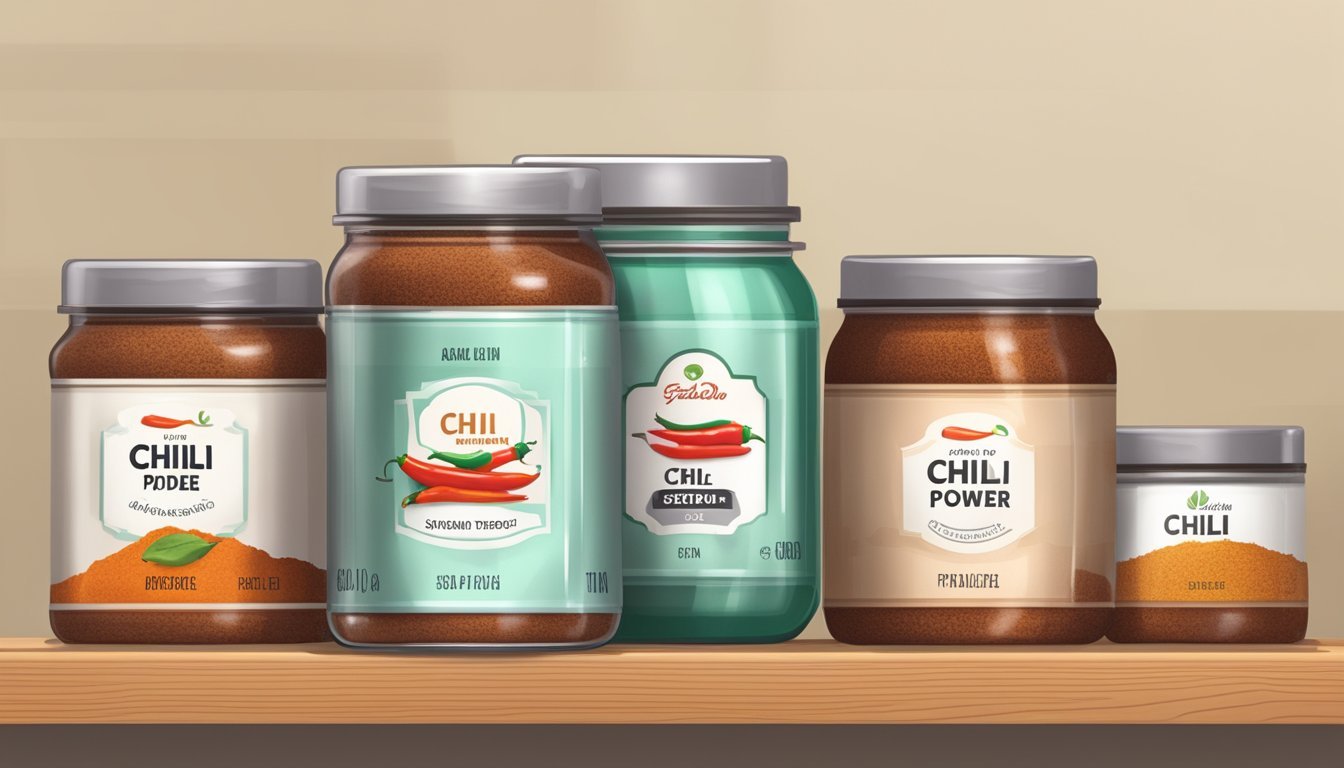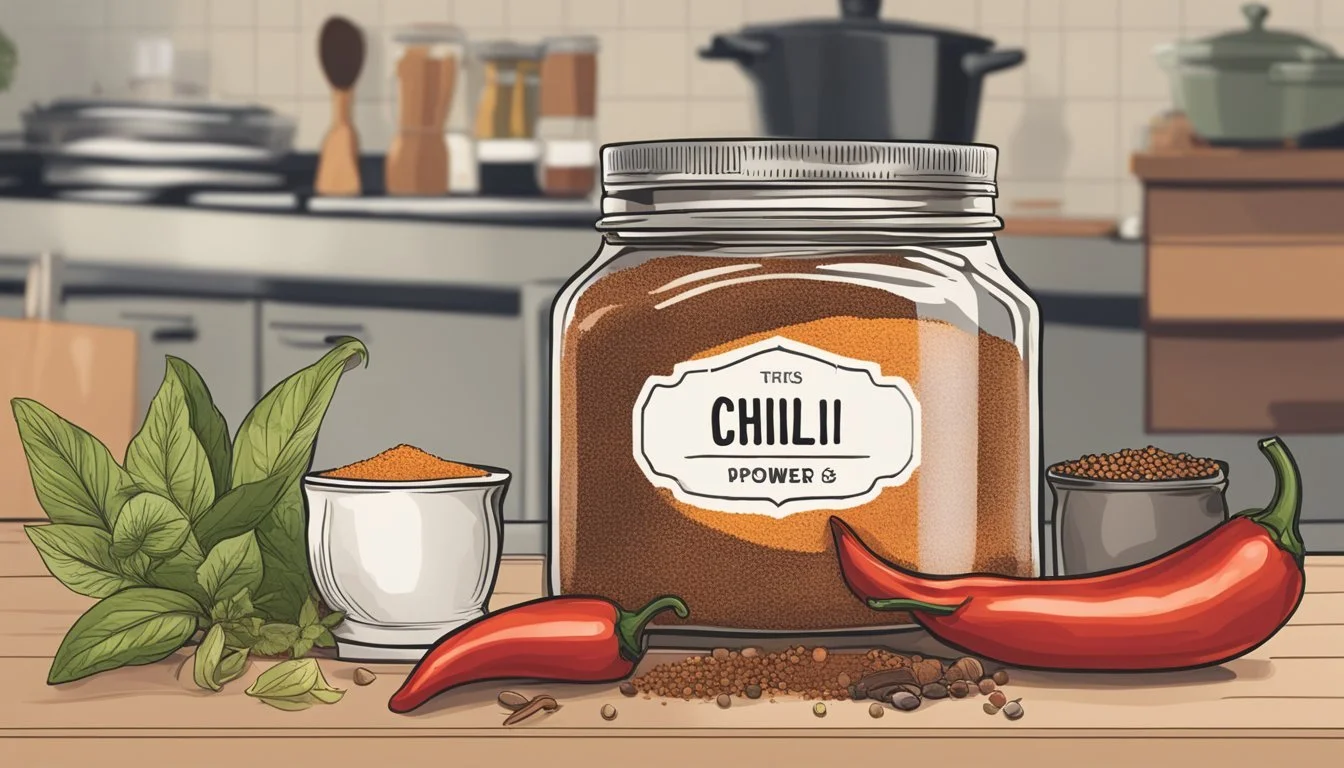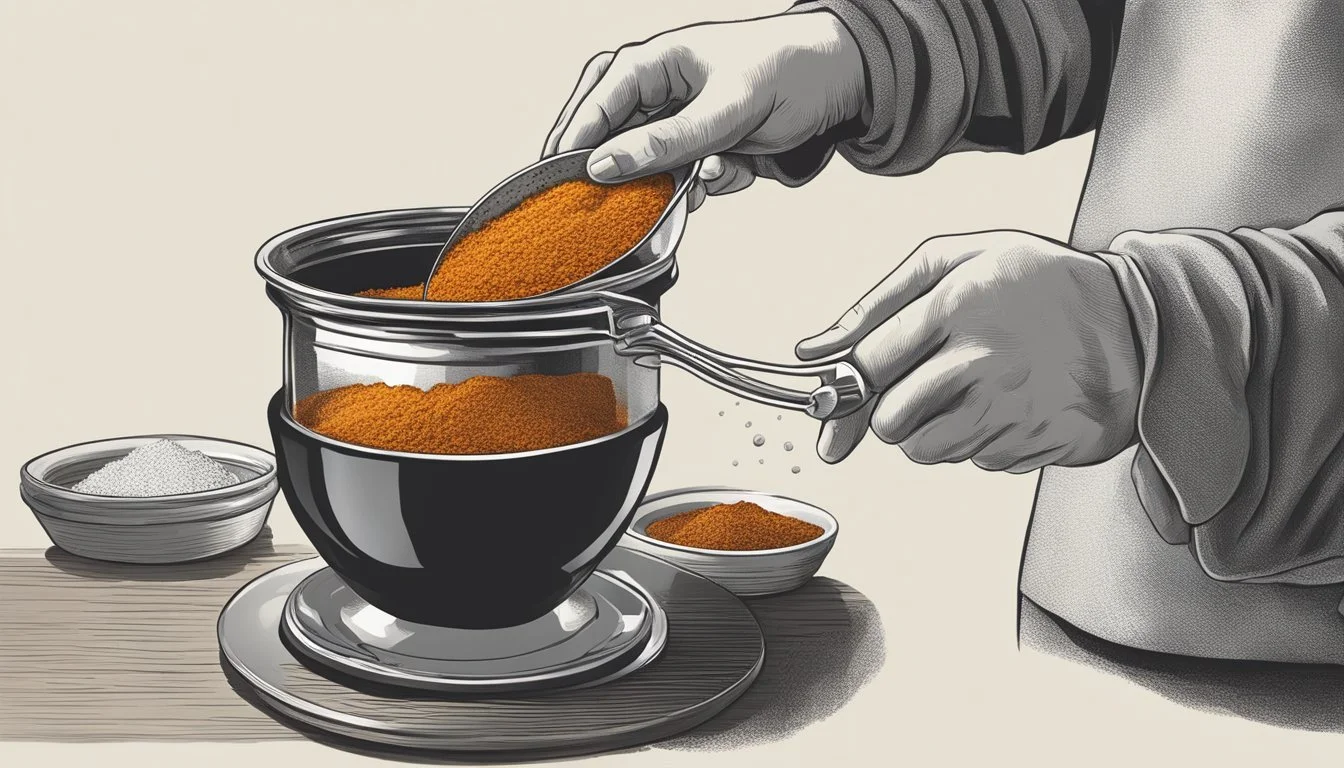Does Chili Powder Go Bad?
Shelf Life and Storage Tips Explained
Chili powder, a staple in many kitchens, adds depth and heat to innumerable dishes. It's an essential component in a variety of cuisines, but one common question looms: Does chili powder go bad? The short answer is yes, chili powder can lose its potency and flavor over time, although it doesn't spoil in the traditional sense like fresh produce might.
Composed of a blend of dried spices, chili powder benefits from a long shelf life due to its low moisture content and antimicrobial properties. These characteristics prevent the growth of bacteria, ensuring the spice blend remains safe for consumption. Over time though, chili powder’s flavor and heat can diminish, making your culinary creations less vibrant. Proper storage in cool, dark places such as airtight containers can help maintain its quality for a longer period.
Understanding how to store chili powder effectively can make a significant difference in preserving its aromatic properties and taste. Readers wanting to get the most out of their spice collection, particularly chili powder, will find practical tips and insights throughout this article, ensuring that each dish packs just the right amount of punch.
Understanding Chili Powder
Chili powder is a staple in various cuisines, known for its vibrant flavor and versatility. Its composition, varieties, and health benefits make it a valuable addition to many dishes.
Composition of Chili Powder
Chili powder typically consists of ground dried chili peppers and a blend of spices like cumin, garlic powder, and oregano. The combination creates a well-rounded, robust flavor profile.
Volatile oils in the chili peppers contribute to the aroma and heat. Spices like cumin add earthy notes, while oregano introduces a subtle herbal quality. These elements work together to enhance the taste of Tex-Mex dishes and more.
Popular Varieties of Chili Powder
There are several popular varieties of chili powder, each with unique characteristics. Cayenne chili powder is known for its intense heat and is often used in spicy dishes. Paprika offers a milder, sweet flavor, making it ideal for garnishing.
Chipotle chili powder brings a smoky flavor, perfect for barbecue sauces. Ancho chili powder provides a rich, fruity taste, enhancing the depth of stews and sauces. Each variant caters to different culinary needs, depending on the desired spice level and flavor profile.
Health Benefits and Usage in Cuisine
Chili powder is rich in vitamins A and C, which are vital for a healthy immune system. It also contains capsaicin, known for its anti-inflammatory properties.
In culinary applications, chili powder is essential in seasoning meats, vegetables, and legumes. It is prominent in Tex-Mex dishes, adding complexity and heat. Besides enhancing flavor, its health benefits make it a valuable addition to a balanced diet.
Factors Affecting Chili Powder Freshness
Maintaining the freshness of chili powder involves various factors such as storage conditions, exposure to heat, light, and air, and the impact of moisture and humidity. Understanding these can help preserve its shelf life, potency, and flavor.
Importance of Storage Conditions
Proper storage is vital in extending the shelf life of chili powder. Airtight containers are preferred as they minimize exposure to air and moisture, which can degrade the spice.
Glass containers are recommended due to their non-reactive nature, but high-quality plastic containers work well too. Pantry cabinets or any cool, dark place ensure minimal light and heat exposure, retaining the powder's color and aroma.
Role of Heat, Light, and Air Exposure
Heat, light, and air are critical factors influencing the aging process of chili powder. High temperatures can cause the essential oils in the chili powder to evaporate, weakening its flavor and aroma.
Light exposure, especially from direct sunlight, can cause the color to fade. Air, or specifically oxygen, can lead to oxidation which degrades the spice's organic compounds.
Impact of Moisture and Humidity
Moisture and humidity are detrimental to chili powder's freshness. Water content facilitates the growth of mold and bacteria, ruining the spice. It can also cause clumping, making the powder difficult to use.
Humidity control is essential. Keeping chili powder in a dry environment helps maintain its potency. Consider using desiccant packets in storage containers for additional moisture absorption.
Proper Storage Techniques for Chili Powder
To maintain the vibrant flavors and quality of chili powder, it's essential to store it correctly. Key considerations include choosing airtight containers, selecting appropriate storage locations, and understanding the benefits of refrigerating or freezing the spice.
Choosing the Right Container
Using an airtight container is critical for preserving the freshness of chili powder. Glass jars with tight-sealing lids, ceramic containers, and BPA-free plastic containers are excellent choices.
Avoid using bags that can easily tear, letting air and moisture in. Opt for containers that block out light to prevent the spice from degrading.
Labeling containers with the purchase date helps keep track of the spice's age, ensuring its quality over time.
Ideal Locations for Storing Chili Powder
Chili powder should be stored in a cool, dark place away from heat and direct sunlight. Ideal locations include a pantry, dark cupboard, or cabinet.
Heat exposure from stovetops and ovens can accelerate the loss of flavor. Keeping the spice in a dry place prevents moisture from clumping the powder and reducing its potency.
It's also advisable to store chili powder away from strong-smelling foods that might affect its aroma.
Refrigerating vs. Freezing Chili Powder
While it is less common, refrigerating or freezing chili powder can extend its shelf life. Refrigerated chili powder should be kept in an airtight container to prevent moisture buildup and odor absorption from other foods in the fridge.
Freezing chili powder is another option, particularly for bulk quantities. Ensure the containers used for freezing are vacuum-sealable or airtight to avoid freezer burn and preserve quality.
Note that frozen chili powder should be brought to room temperature before use to restore its full flavor profile.
Identifying Spoiled Chili Powder
Chili powder can lose its quality over time, showing signs of spoilage such as discoloration and a loss of potency. Understanding these signs and the risks involved can help maintain the spice's effectiveness.
Signs of Deterioration
Spoilage in chili powder often manifests as discoloration. The bright red hue may fade to a dull brown. Additionally, clumping can indicate exposure to moisture.
A significant sign of spoilage is the presence of mold growth. This can appear as white or greenish spots. The aroma will also diminish, and the flavor will become flat or bland. Rancid odors might develop, signaling that the oils in the spices have deteriorated.
Risks of Using Expired Chili Powder
While expired chili powder poses minimal health risks, its quality suffers. The primary concern is a reduced flavor, which affects the overall appeal of dishes.
Using chili powder that's lost its potency means more might be needed to achieve the desired taste, potentially skewing recipes. Mold-contaminated chili powder, though rare, can introduce unpleasant flavors and might pose health risks for those sensitive to mold.
How to Conduct a Freshness Test
A simple taste test can reveal whether chili powder is still viable. Take a small pinch and taste it. If the flavor is still vibrant, the spice is good to use.
Visual inspection is also effective. Check for clumps, discoloration, or mold. Finally, crush a small amount between your fingers. Fresh chili powder should feel dry and fine, without any moist or oily texture.
By employing these methods, one can ensure that their chili powder remains a valuable addition to their spice collection.
Determining the Lifespan of Chili Powder
Chili powder doesn't spoil in the traditional sense but does lose its potency over time. Storing it properly, understanding packaging dates, and recognizing signs of degradation are essential.
Shelf Life of Store-Bought vs. Homemade
Store-bought chili powder usually contains preservatives and standardized packaging that extends its peak quality. When properly stored, it can last up to 3-4 years. Homemade chili powder, on the other hand, lacks these preservatives, potentially reducing its shelf life to around 1-2 years.
To extend longevity, both types should be kept in airtight containers away from heat, light, and moisture. Homemade varieties benefit from extra attention to these storage guidelines to maintain their spice and flavor.
Reading Expiration and Use-By Dates
Expiration, "best before," and "use-by" dates on chili powder packaging provide insight into its peak quality period. While the powder might still be safe after these dates, its flavor and aroma may have significantly faded.
It's crucial to note that these dates are more about quality than safety. Even beyond the listed date, properly stored chili powder can still be used, though it might not deliver the desired flavor punch.
Knowing When to Replace Your Chili Powder
The easiest way to determine if chili powder has lost its freshness is by tasting and smelling a small amount. If it lacks a strong aroma or tastes bland, it’s time to get a new batch. The color can also be a clue; faded chili powder often indicates lost flavor.
Regularly rotating your stock, noting purchase dates, and adhering to good storage practices can help avoid using outdated spices. Always ensure the containers are sealed tightly and kept in a cool, dark place to retain maximum potency for as long as possible.
Maximizing Chili Powder Potency
To ensure chili powder delivers its maximum flavor and potency, one should focus on grinding fresh batches, proper storage methods, and enhancing dishes with peak-quality spice. These practices help maintain the essential qualities of the powder.
When to Grind Fresh Chili Powder
Grinding fresh chili powder yields a more vibrant flavor. It is best done just before use, ensuring the highest potency. Store-bought chili powders tend to lose their robustness over time.
Use a spice grinder for small batches, which provides a fresh and intense flavor. Freshly ground spices can also be tailored to specific recipes, allowing for custom spice blends. The freshness of the grind significantly boosts the overall quality of dishes.
Tips for Preserving Flavor and Aroma
Proper storage is key to preserving chili powder's potency. Transfer the powder from its original packaging to airtight containers, preventing exposure to air and moisture.
Store these containers in a cool, dark place, like a pantry or kitchen cabinet, away from heat and light. These elements can cause the spice to lose its flavor rapidly. Avoid freezing chili powder as it might create condensation when thawed, impacting the spice's quality.
Enhancing Dishes with Peak-Quality Chili Powder
Using chili powder at its peak quality involves adding it at the right time during cooking. To preserve its aroma and flavor, add it towards the end of the cooking process when using in rubs and spice blends.
Testing the spice quality before use is advisable. Taste a small amount to determine its potency. If the flavor has faded, consider using a fresher batch to ensure the dish's quality is not compromised. This practice enhances the overall taste and effectiveness of the spice in various dishes.






